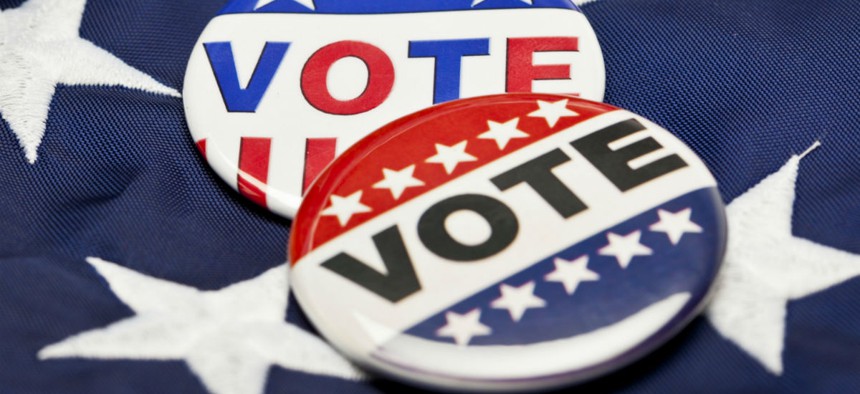
Time Off to Vote, a Meager Cost-of-Living Bump and Free Flu Shots
A weekly roundup of pay and benefits news.
Lines are likely to be long at the polls on Nov. 8, so federal employees who want to have a say in choosing their next boss might want to start thinking now about the best time to vote. The Office of Personnel Management on Monday issued a memo reminding agency heads that the federal government has a policy of allowing employees excused absences to vote under certain circumstances.
Specifically, if federal workers do not have three hours either before or after work to get to their polling place while it is still open, then they can receive an excused absence long enough so they have that three-hour window to cast their ballot. Employees should choose the option that will be the least disruptive to their work, OPM noted, providing the following examples:
If an employee is scheduled to work from 8:00 a.m. to 4:30 p.m. and the employee’s polling place is open from 7:00 a.m. to 8:00 p.m., the employee should not be granted excused absence for voting, since the employee would still have at least 3 hours after the end of his or her workday to vote. However, if an employee is scheduled to work from 8:00 a.m. to 4:30 p.m. and the employee’s polling place is open from 7:00 a.m. to 7:00 p.m., the employee may be granted ½ hour of excused absence from 4:00 p.m. to 4:30 p.m., if requested.
For those in jurisdictions that allow early voting, there will be no excused absences on Election Day unless the employee was forced to vote ahead of time due to a work conflict on Nov. 8, such as official travel, or the hours for early voting were at least as long as those on the actual day.
Members of the military and those stationed overseas can click here for information on voting. Also, for feds who have not yet decided which presidential candidate they support, we have analyzed what both Democratic nominee Hillary Clinton and Republican nominee Donald Trump would be like as managers of the bureaucracy. Click here to read those stories.
In other pay and benefits news this week, retirees found out that they will receive a tiny cost-of-living adjustment in 2017. The 0.3 percent COLA is the smallest non-zero increase since the 1975, according to the Committee for a Responsible Federal Budget, a nonprofit fiscal policy group. Retiree advocates were none too pleased with the meager increase, noting that health care costs in particular are rising at a much faster pace for seniors.
Premiums for the Federal Employees Health Benefits Program, for instance, will go up 6.2 percent on average next year. There is also a potential problem for those in the Civil Service Retirement System: they will not be protected against significant rises in Medicare Part B premiums because they do not receive Social Security.
The “hold harmless” provision of Social Security law ensures that Medicare Part B premiums cannot grow more than the dollar amount of an individual’s Social Security benefit, meaning that in years when the COLA is low or nonexistent, Medicare Part B premiums will rise moderately if at all. Retiree advocates called on Congress to act quickly to address the potentially large premium hike for those who don’t fall under “hold harmless,” arguing that groups of retirees with similar incomes should not be treated differently based on whether they receive a federal annuity or Social Security benefits.
Speaking of health care, OPM and the Health and Human Services Department would like to remind federal employees to take steps to protect against spreading illnesses around the office this fall and winter. Employees are encouraged to get flu shots, the agencies said in a memo. Many agencies offer the shots at their offices either for free, or at a low cost, and most FEHBP plans cover the shots at pharmacies or the doctor’s office with no co-pays, the notice stated.






